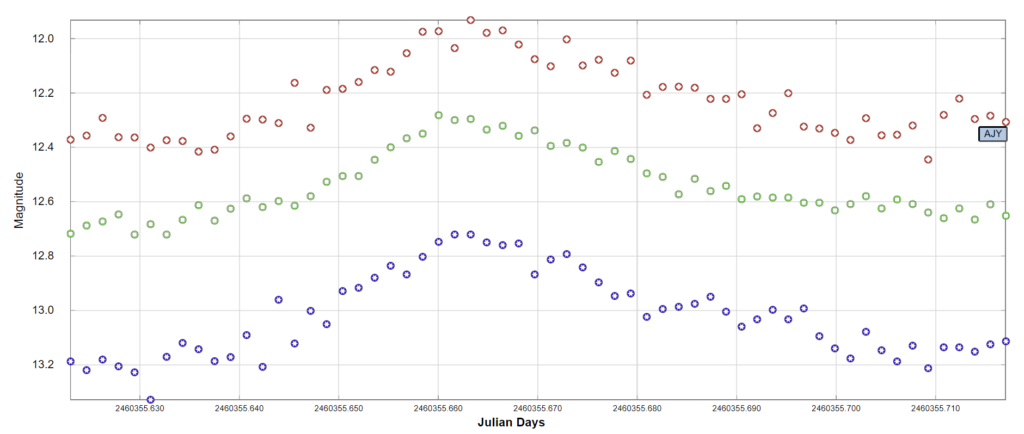Observational Astronomy
Two of the organizational goals of the Astronomical League of the Philippines are to promote Observational Astronomy and the conduct of astronomical research studies. With the celebration of the National Astronomy Week 2024, ALP launched the ALP Citizen Science Program. This program aims to promote the conduct of scientific observations by amateur astronomers for the purpose of research and education. The organization has been at the forefront of promoting and developing Observational Astronomy in the country, and this program addresses the desire of Filipino amateur astronomers to contribute to the science of Astronomy.
Nova V1723 Sco

Smart telescopes are on the rise, and they are not just for casual observing or electronically assisted Astronomy (EAA). Using a ZWO Seestar S50, citizen scientist John Eugenio monitored the activity of Nova V1723 Sco in the constellation of Scorpius. From the colored images obtained from the S50, FITS frames were photometrically analyzed by fellow amateur astronomer Raymund Ang, and John submitted his scientific data to the American Association of Variable Star Observers (AAVSO) International Database. The light curve above shows the gradual magnitude decline of the nova on all three color channels. This is still an ongoing nova event, and amateur astronomers are encouraged to obtain valuable photometric data. (Image credit: AAVSO Enhanced LCG)
Observational Astronomy Education

Another area where citizen scientists or amateur astronomers can contribute towards the advancement of Philippine Astronomy is through collaboration with Astronomy educators. Aldrin Gabuya is currently an instructor at the Rizal Technological University, and teaching the Observational Astronomy course. As part of the Citizen Science Program, using an 8-in Newtonian astrograph and a Unistellar eQuinox smart telescope, Raymund sends FITS images of selected targets, such as galaxies, comets and variable stars, to Aldrin for image and photometric analysis for his class. This highlights the importance of collaboration between citizen astronomers and Astronomy educators in providing authentic educational experience – even when using modest equipment and aperture. Above is the tricolor magnitude light curve of variable star V0488 Gem with a period of 2.24 hours. (Image credit: AAVSO Enhanced LCG)
Raymund Ang
Program Coordinator
Citizen Science Program
